Trektember: Star Trek: The Motion Picture | Classics
In Which Spock Gets His Heart
I unabashedly love this movie, and pretty much have since I got it on a videotape. The opening scene is fantastic. It really *is* visually and musically a lovely movie. Almost 40 years after it was made, Doug Trumbull’s visuals are still gorgeous, as is the color of the whole movie. The Jerry Goldsmith music works too, of course.
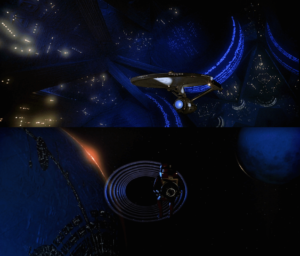 I have never been bored by even a moment of this movie. The approach to the Enterprise sequence is pure cinema, and it’s more than okay for Star Trek to be cinematic. It is the most Day-In-The-Life of the Star Trek movies; there is a real sense of place on the ship, which may be why it is frequently the exact Star Trek I am in the mood for; and when I’m in the mood for it, it is my favorite of the films. When I’m not particularly, then, of course, my favorite is The Wrath of Khan.
I have never been bored by even a moment of this movie. The approach to the Enterprise sequence is pure cinema, and it’s more than okay for Star Trek to be cinematic. It is the most Day-In-The-Life of the Star Trek movies; there is a real sense of place on the ship, which may be why it is frequently the exact Star Trek I am in the mood for; and when I’m in the mood for it, it is my favorite of the films. When I’m not particularly, then, of course, my favorite is The Wrath of Khan.
This one isn’t an action film. It operates more as philosophical science fiction, which is what the original series often was, and it’s probably better sci-fi than it is quintessential Star Trek, but after six tonally different Classic Trek films, it no longer needed to be that.
In All the Wrong Places
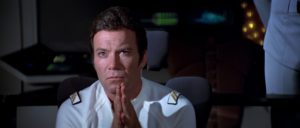 Here we have a picture about humanity breaking through the prisons built by isolation. The crew had been separated from each other as long as America had been from the show. Is The Motion Picture cold? It starts there, a little. The characters are uneasy because they’re coming back from other career paths. Whether they should have or not, The Enterprise is something they have moved on from. Kirk wears it heavy, having been in the wrong place since his promotion. He is now uncomfortable acting as a Captain, and no longer accustomed to leading people. When the transporter accident happens, his consolation of Janice Rand is almost brittle. But right before that, you can see the water in his eyes.
Here we have a picture about humanity breaking through the prisons built by isolation. The crew had been separated from each other as long as America had been from the show. Is The Motion Picture cold? It starts there, a little. The characters are uneasy because they’re coming back from other career paths. Whether they should have or not, The Enterprise is something they have moved on from. Kirk wears it heavy, having been in the wrong place since his promotion. He is now uncomfortable acting as a Captain, and no longer accustomed to leading people. When the transporter accident happens, his consolation of Janice Rand is almost brittle. But right before that, you can see the water in his eyes.
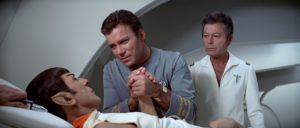 Spock has also been in the wrong place: pursuing a life of total logic, despite being half human, something he should already know that cannot really escape. But as soon as he shows up on the Enterprise, the engines get fixed! He’s in the place where he belongs. He thinks he is looking for V’ger, but he isn’t; and by the end of this movie, he will have warmed up beyond where he was in the series, his open acknowledgement of friendship being the main carryover to the rest of the films, all the way to the 2009 picture.
Spock has also been in the wrong place: pursuing a life of total logic, despite being half human, something he should already know that cannot really escape. But as soon as he shows up on the Enterprise, the engines get fixed! He’s in the place where he belongs. He thinks he is looking for V’ger, but he isn’t; and by the end of this movie, he will have warmed up beyond where he was in the series, his open acknowledgement of friendship being the main carryover to the rest of the films, all the way to the 2009 picture.
Bones may not have been in the wrong place for himself, but he is needed by others, and he’s the first to settle in. The rest of the main crew seem fine, but just busy, doing jobs, being functional. They’re not the family we remember from great episodes (regardless of silly premises) like The Immunity Syndrome. That’s what this movie is about, returning to the people we need, to where we belong.
Returning
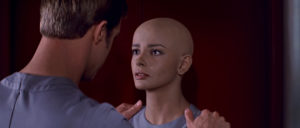
The inability of people to connect and even work well together is the problem, even V’ger’s problem. Its technology supersedes humanity in Ilia, the most empathetic person on board; but eventually Ilia’s humanity breaks through V’ger’s machineness.
So, beginning at a place of disconnection, this movie doesn’t actually start like Star Trek; it returns us to that place in the course of the film. This is why it’s as much a clone of The Changeling as The Wrath of Khan is of Run Silent, Run Deep or Moby Dick, and much less than Into Darkness is of Khan. Thematically, The Changeling was about a computer that wanted to sterilize everything that was imperfect. V’ger is on a mission to find, and unite with, its creator.

It’s as warm of a quest as Nomad’s goal is cold, and resembles the created side of humanity— where Nomad more aptly represents the fall.
Let’s call that brief theological insight my redeeming-culture due diligence, because this movie wears its themes on its sleeve, and I’m really writing for another reason: I hope desperately to replace a movie you’re inclined to dismiss and dislike with one you might really enjoy. That’s the particular element of redemption I pursue today.
“There is, I suspect, a sense in which you can be too sophisticated for your own good when you see a movie like this. Some of the early reviews seemed pretty blasé, as if the critics didn’t allow themselves to relish the film before racing out to pigeonhole it. My inclination, as I slid down in my seat and the stereo sound surrounded me, was to relax and let the movie give me a good time. I did and it did.”
– Roger Ebert in his original, 3 star review of the least of this film’s incarnations, in 1979
I do understand people who genuinely find this movie unengaging, though only because it is not uncommon. Loving it isn’t either, and to be honest, I never understand the dislike while I’m watching it. I just acknowledge it as a fact of life, like people not enjoying good, silky chocolate. In defense of the opposing view, it’s true that this movie is not going to fight for our engagement, and it has a reputation that precedes it, the most common form being, “I’ve heard that all the odd numbered Star Treks are the bad ones.” If one approaches it with negative expectations, that view may quickly easily win the day.
When it was the only, long awaited Star Trek movie, the only new Star trek anything available, it did not encompass all that Star Trek represented to its fans. Some said it wasn’t like Star Trek at all. Now, I defy them to watch Balance of Terror and The Corbomite Maneuver, two of the most loved, early episodes of the series, and tell me this is still out of place. The latter spends 80% of its time with the ship still, the crew trying to figure out what this giant thing they’ve found in space is. But they had a point – it didn’t check all Trek boxes.
When it was on commercial tv, it came in a TV cut, which was better than the theatrical; but it was also longer, and *much* longer with commercials. This movie needed to be broken up as about much as Blade Runner does, and that one was supposed to fulfill all that people wanted from a Harrison Ford movie, you know, like Empire and Raiders. Being more R-rated, Blade Runner was less shown on commercial TV, so its re-watches were primarily done via tapes and discs, uninterrupted. You could stay with its vibe, and up went its reputation as people found themselves absorbed by this previously widely declared ‘boring’ movie. The Motion Picture also has a vibe, but it’s hard to get with if you’re interrupted every 7 minutes by a bunch of ridiculous talking mice.
The “it’s boring” read also made sense coming on the heels of Alien, Superman: The Movie and Star Wars as recent examples of the excitement this kind of cinema could bring. It made sense then. I think it doesn’t anymore.
There are six Kirk & Spock Star Trek movies, and all are pretty different in tone. The Wrath of Khan is a submarine adventure about loss. The Search for Spock is a warm elegy. “The One With the Whales” is a friendly comedy. The Motion Picture is a grand, exploratory epic about the regathering of a crew damaged by each others’ absences. Is it slow? Maybe. So are Blade Runner, Solaris, Arrival, Close Encounters, and 2001: A Space Odyssey. Slow doesn’t equal lousy, and Star Trek doesn’t equal speed. It never did. That was just an option; it’s never been a requirement. The brilliant effects, as noted, are by Doug Trumbull, and he likes to let us gaze at the images, not just watch them rush by too quickly for us to see the seams.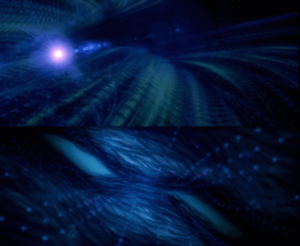
I only need one of this kind of movie in this set of films, and this one fills that spot so nicely.
To Explore Strange New Alternate Cuts
Now a word on the Director’s Cut. This was a strange kind of overhaul. Some of the effects that could not be completed in 1979 were created for it. Over 100 shots changed for unfinished effects, but there were over 1000 edits to this version. Some of the scenes added in the TV cut were included, and some were not; a more discerning edit. In 1979, the final cut came very late, about 2 weeks before release. Some dialogue had been trimmed because the film needed to maintain a running time of under 130 minutes, and as effects came in, shots and lines were not cut judiciously, but swiftly. A full sound mix had been developed, but there was no time to incorporate it, so the bridge of The Enterprise was basically silent. Cold. Inert. The director’s cut adds atmosphere by restoring the sound mix intended.
But it wasn’t just a technical fix. Most of the changes led to the film being more human. Screams were added to the transporter accident – humanizing it through horror. The color timing was adjusted, away from most of the video transfers and closer to what had been on screen, warmer colors, not so much gray. Many computer voices were replaced by human ones. They added in a bit of Goldsmith’s music to the moment when Ilia heals Chekov, underlining the connection. A lot of dialogue left in the film had been shot in order to explain the story in case the effects didn’t work. Many of those extraneous lines have been removed to keep the focus on human moments; Sulu doesn’t report that “The new screens held!” after the screens hold against V’ger’s torpedo. Spock’s thruster instructions have been removed. We can see the panel, and he knows what he’s doing. Needless moments of Kirk being grouchy at people were cut. The Spock & Kirk friendship scene in the medical bay has been trimmed of Kirk’s snapping, Spock’s explaining – all the stuff that takes the focus away from that human moment.
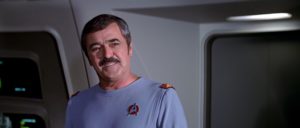 But most sublime is the replacement of holder shots. You see, in 1979, this movie came in just under the wire. To illustrate: it was released on December 7th, and the final recording session for the score happened on December 2nd. Final editing was likewise a rush, so shots had been inserted to hold space where, ultimately, other shots would go. But many never did. For this version, filler shots of equipment and computer screens that had been left in, or of random extras milling about, have been replaced with meaningful reaction shots of the crew, and even some of the existing reaction shots have been replaced with the kind that pull you into the drama rather than make you wonder how long George Takei had to count in his head to maintain a look. They no longer convey just that they’re seeing something, but what’s important about what they’re seeing, or what was just said, or done. In a way, the warmth of the movie has been recalibrated throughout: fine tuned, if you will.
But most sublime is the replacement of holder shots. You see, in 1979, this movie came in just under the wire. To illustrate: it was released on December 7th, and the final recording session for the score happened on December 2nd. Final editing was likewise a rush, so shots had been inserted to hold space where, ultimately, other shots would go. But many never did. For this version, filler shots of equipment and computer screens that had been left in, or of random extras milling about, have been replaced with meaningful reaction shots of the crew, and even some of the existing reaction shots have been replaced with the kind that pull you into the drama rather than make you wonder how long George Takei had to count in his head to maintain a look. They no longer convey just that they’re seeing something, but what’s important about what they’re seeing, or what was just said, or done. In a way, the warmth of the movie has been recalibrated throughout: fine tuned, if you will.
While I have loved all versions of this film, the fact is that the 1979 version was simply unfinished, and the TV version merely less unfinished. This one is the way to go, with one caveat – it only exists in a DVD format, which, nowadays, is pretty low quality, and quality matters. It does with all films, but this one especially. It is a beautiful movie, and that element of it should be experienced, not just noted, as if to be checked off a list of qualities. The Motion Picture was long marred by being seen on TV screens with the picture cut by half, in order to fill up our old TVs. DVDs showed us the full movie screen, but the picture, using less of the screen, had less detail, turning painting-like feasts for the eyes into images nearer to storyboards.
And so The Director’s Cut only exists in DVD form. I must confess, DVD is not the way to go, and apparently I’m not alone in thinking that. Because the theatrical cut is around in hi-def, while the Director’s Cut isn’t, the 1979 ‘work print’ edition remains the one shown everywhere, and shame on Paramount Pictures for that. The team who got The Motion Picture into the condition Robert Wise said was his preferred version of the film, did so in a way to make a hi-def restoration ready and very easy, but Paramount haven’t enabled it to happen. Fans have done their best to remake this cut out of the HD material, and have done pretty well, but I can’t tell you how I found that – not for ethical reasons, but because I simply can’t relocate the source.
So keep your eyes open for a hi-def release of this film down the road, and if it appears, make that an excuse to give it a shot, or another shot. It’s thoughtful and lovely, and there are few pleasures like coming to enjoy something you used to dislike.
• • •
Trektember is an annual series about Star Trek; this year, we’re examining the first seasons of Star Trek: Discovery and The Orville. For more information on this series, click here; or, to read every article from the beginning, click here!


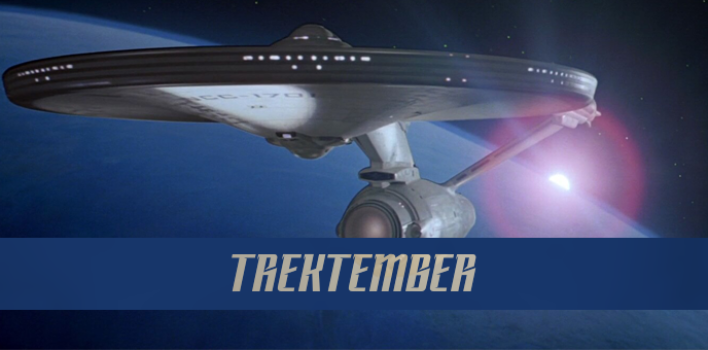
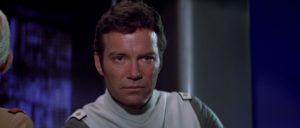
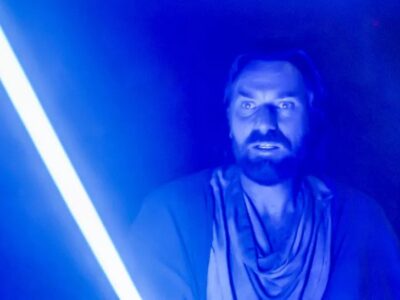
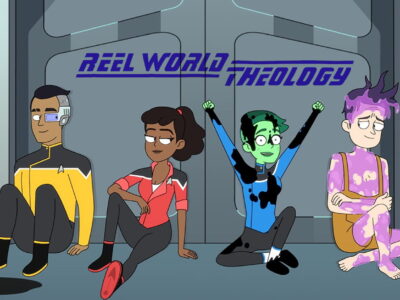
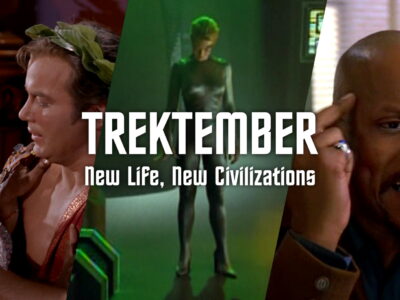


Pingback: Trektember: Season 3 Episode List | Reel World Theology